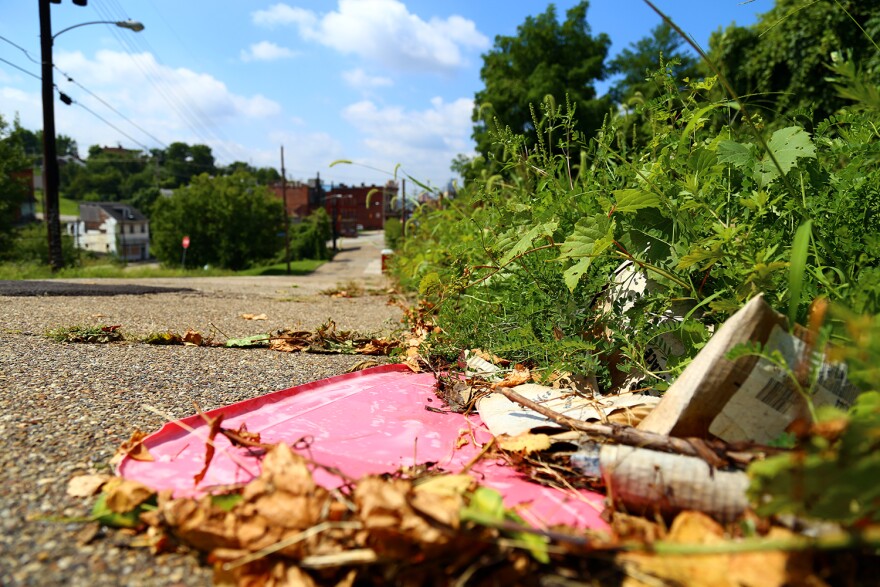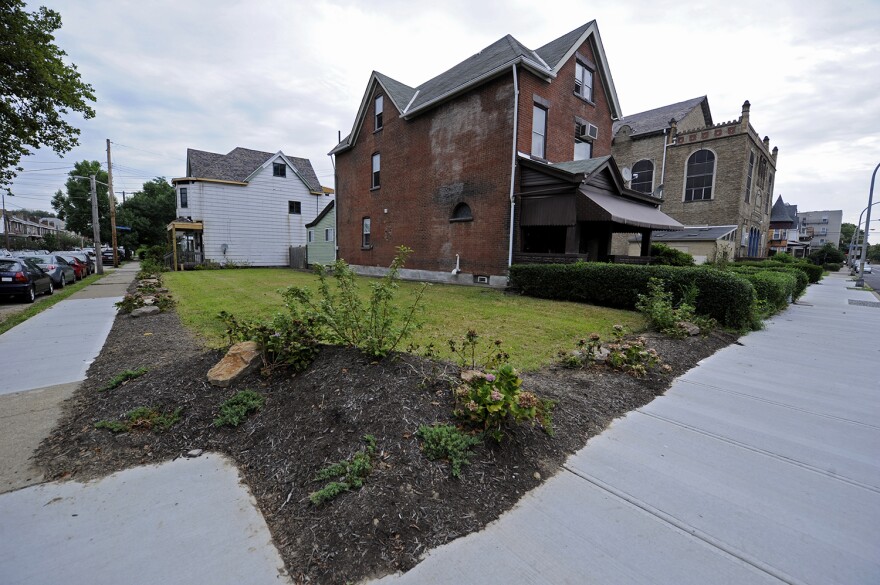*Part one of a three-part series.
When Lena Andrews moved from Friendship to East Liberty, she was enamored with her new neighborhood’s array of restaurants and shops, easy access to transit and its diversity. The lack of parks and gardens puzzled her, though.
At the time, trash covered the corner of East Liberty Boulevard and Mellon Street: empty cans, bottles, fast-food paper bags. When the city mowers would cut the grass, they would mow right over the garbage, crushing it into the earth.
The litter sent the wrong message.
“It makes people who are passing by think it’s OK to throw more litter or to insult your neighborhood — and it’s not,” said Andrews, a planning and development officer at ACTION-Housing.
Since the rectangular corner lot seemed unruly with tall patches of browning grass, it was the perfect place for passersby to drop whatever garbage they were carrying. More fast-food bags, plastic lids and shopping bags littered the perimeter.
More than 27,000 lots of land sit vacant, often sites of formerly blighted homes that have been demolished.

According to Andrews, a home existed on this lot in 1910. Based on historic maps, she thinks it could have been standing until as late as 1967.
“When they demo these blighted buildings, these historic buildings, what’s left is just a vacant lot and it’s like, OK, now what?” Andrews said.
It costs the city roughly $595 a year to maintain a lot, but garbage can still accumulate.
Funding large-scale building projects is not only expensive, but time-consuming, so new development is not always the answer.
To fill the gaps, residents like Andrews are taking it on themselves to clean up lots and change them from eyesores to gardens, parklets and other green resources for their community.
When residents might have considered moving out, these projects can spur residents to instead start cutting their grass and painting their homes, basically reinvesting in what they have, according to Mark Masterson, executive director of the Northside Community Development Fund.
When they demo these blighted buildings, these historic building, what's left is just a vacant lot and it's like, OK, now what?"
“It has a sort of ‘butterfly effect,’” when a small change sets off a series of events that lead to substantial change, said Masterson, who also works on community projects to address blight.
Using knowledge from previous work at the Urban Redevelopment Authority, Andrews applied for the city’s Love Your Block Grant, which provided $1,000 last year to refurbish the lot.
The program, a partnership between the city and Peoples Gas, annually awards grants to neighborhood nonprofits who want to revitalize their neighborhood on a small block-by-block scale.
Lex Janes, who manages the program, said 19 grants were awarded in 2016.
To qualify, projects must show they benefit the entire community and should be visible from the street or another public space.
Mellon Street Neighbors, a few blocks from the Barack Obama Academy of International Studies and Pittsburgh Theological Seminary, were among the grant-receiving groups.

In early August, workers from WhiteTail Landscaping were weed whacking the perimeter.
“The whole neighborhood chips in,” said resident Samuel Hawkins, who owns the company.
He gives landscaping advice and lets volunteers use his tools to save money — which proved helpful because the volunteers on Mellon Street discovered $1,000 doesn’t stretch far. They used most of it to buy plants and flowers.
But Andrews has sourced help from the community, including PULSE Pittsburgh — a nonprofit that pairs college graduates with area nonprofits to cultivate community leaders. Two of its East Liberty fellows crafted the handmade sign for the Mellon Street parklet.
The upkeep is ongoing. In October, the neighborhood plans to plant seven trees around the perimeter of the lot and Hawkins hopes to create a fence out of wood pallets.
Residents in other neighborhoods have followed suit. Mayor Bill Peduto announced Stanton Heights Neighborhood Association as the winner of this year’s Best Block Award. This award means an additional $2,000 grant for the neighborhood to continue work on its Stanton Avenue site where over 600 pounds of garbage has been removed.
Janes said grants are often just a starting point. Residents keep working even when the money’s long gone.
“They kind of take ownership of the area,” he said. “They don’t allow it to revert back to how it was.”
Find this report and others at the site of our partner, PublicSource.


